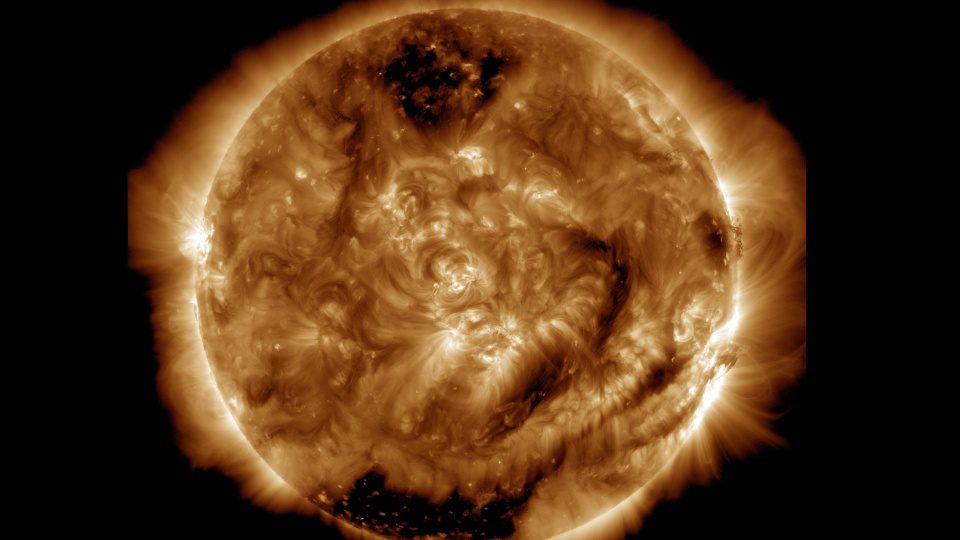Given how vulnerable our atmosphere and climate are to solar activity, these ice cores also serve as a record of solar activity.
In a recent investigation of ice cores from Greenland and Antarctica, a research team headed by Lund University in Sweden discovered evidence of an intense solar storm that happened some 9,200 years ago, at a time when solar activity was thought to be at its “quietest.”
The team included researchers from Lund University’s Department of Geology and Quaternary Sciences, the Alfred Wegener Institute (AWI) for Polar and Marine Research, ETH Zürich’s Laboratory of Ion Beam Physics, and Cambridge University’s Ice Dynamics and Paleoclimate team (part of the British Antarctic Survey).
Their findings were just published in the journal Nature Communications.
The Sun is essential for the majority of life on Earth and the mechanisms that assure its continuous habitability.
The “Sunspot Cycle,” 11 years period during which the quantity and position of sunspots on the surface increases and declines, is the inverse of this connection.
The Sun’s surface becomes more active during times of high sunspot activity (a “solar maximum”), resulting in greater solar wind and the odd solar flares.
When they reach Earth’s atmosphere, they may cause geomagnetic storms (or solar storms) that have significant consequences for Earth’s infrastructure, such as power outages and communication disruptions.
By building predictive models that can forecast solar activity, including solar storms, we can establish advanced warning systems that will allow us to prepare for the inevitable disruption.
However, forecasting solar storms is a complex undertaking.
Solar storms are now thought to be more probable during the Sun’s active phase (solar maximum).
This, however, may not always be the case for powerful storms, according to a study headed by Lund University experts.
The scientists discovered peaks of radioactive isotopes – beryllium-10 and chlorine-36 – generated by high-energy cosmic rays linked with solar storms while examining ice cores from Greenland and Antarctica.
How Comes Earth Was Not Destroyed By Then?
This was a surprise discovery, given that the event that produced these isotopes happened around 9125 years ago (ca. 7176 BCE).
This corresponds to the “Neolithic Period,” a historical epoch in which humanity transitioned from hunting and gathering to agriculture and sedentary existence.
It is thought that Earth was less vulnerable to such intense occurrences at this period.
According to co-author Raimund Muscheler, a geology expert at Lund University
“We have studied drill cores from Greenland and Antarctica, and discovered traces of a massive solar storm that hit Earth during one of the sun’s passive phases about 9,200 years ago. This is time-consuming and expensive analytical work. Therefore, we were pleasantly surprised when we found such a peak, indicating a hitherto unknown giant solar storm in connection with low solar activity.”

The researchers discovered those surprising findings after analyzing ice cores. Photographer: Raimund Muscheler
When it comes to lessening the dangers presented by solar storms, the consequences of this discovery might be enormous.
Now, a storm of the same scale would have disastrous effects for Earth and space exploration activities.
In addition to causing power outages worldwide, disrupting communications, and jeopardizing air traffic control, it would destroy satellites and make contact with astronauts or long-distance missions very difficult.
Knowing how and when they may occur (independent of the solar spot cycle) is critical to maintaining the safety of people and infrastructure (whether on Earth or in space).
Muscheler noted that these massive storms are not appropriately considered in risk calculations at the moment. It is critical to understand what these occurrences potentially entail for today’s technology and how we can defend ourselves.
Source: Universetoday












Leave a Reply